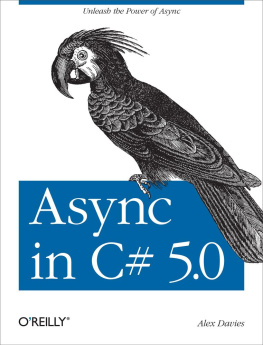Kyle Simpson - You Dont Know JS: Async & Performance
Here you can read online Kyle Simpson - You Dont Know JS: Async & Performance full text of the book (entire story) in english for free. Download pdf and epub, get meaning, cover and reviews about this ebook. year: 2015, publisher: OReilly Media, genre: Romance novel. Description of the work, (preface) as well as reviews are available. Best literature library LitArk.com created for fans of good reading and offers a wide selection of genres:
Romance novel
Science fiction
Adventure
Detective
Science
History
Home and family
Prose
Art
Politics
Computer
Non-fiction
Religion
Business
Children
Humor
Choose a favorite category and find really read worthwhile books. Enjoy immersion in the world of imagination, feel the emotions of the characters or learn something new for yourself, make an fascinating discovery.
- Book:You Dont Know JS: Async & Performance
- Author:
- Publisher:OReilly Media
- Genre:
- Year:2015
- Rating:3 / 5
- Favourites:Add to favourites
- Your mark:
- 60
- 1
- 2
- 3
- 4
- 5
You Dont Know JS: Async & Performance: summary, description and annotation
We offer to read an annotation, description, summary or preface (depends on what the author of the book "You Dont Know JS: Async & Performance" wrote himself). If you haven't found the necessary information about the book — write in the comments, we will try to find it.
You Dont Know JS: Async & Performance — read online for free the complete book (whole text) full work
Below is the text of the book, divided by pages. System saving the place of the last page read, allows you to conveniently read the book "You Dont Know JS: Async & Performance" online for free, without having to search again every time where you left off. Put a bookmark, and you can go to the page where you finished reading at any time.
Font size:
Interval:
Bookmark:
Chapters 1 and 2 went into quite a bit of detail about typical asynchronous programming patterns and how they're commonly solved with callbacks. But we also saw why callbacks are fatally limited in capability, which led us to Chapters 3 and 4, with Promises and generators offering a much more solid, trustable, and reason-able base to build your asynchrony on.
I referenced my own asynchronous library asynquence (http://github.com/getify/asynquence) -- "async" + "sequence" = "asynquence" -- several times in this book, and I want to now briefly explain how it works and why its unique design is important and helpful.
In the next appendix, we'll explore some advanced async patterns, but you'll probably want a library to make those palatable enough to be useful. We'll use asynquence to express those patterns, so you'll want to spend a little time here getting to know the library first.
asynquence is obviously not the only option for good async coding; certainly there are many great libraries in this space. But asynquence provides a unique perspective by combining the best of all these patterns into a single library, and moreover is built on a single basic abstraction: the (async) sequence.
My premise is that sophisticated JS programs often need bits and pieces of various different asynchronous patterns woven together, and this is usually left entirely up to each developer to figure out. Instead of having to bring in two or more different async libraries that focus on different aspects of asynchrony, asynquence unifies them into variated sequence steps, with just one core library to learn and deploy.
I believe the value is strong enough with asynquence to make async flow control programming with Promise-style semantics super easy to accomplish, so that's why we'll exclusively focus on that library here.
To begin, I'll explain the design principles behind asynquence, and then we'll illustrate how its API works with code examples.
Understanding asynquence begins with understanding a fundamental abstraction: any series of steps for a task, whether they separately are synchronous or asynchronous, can be collectively thought of as a "sequence". In other words, a sequence is a container that represents a task, and is comprised of individual (potentially async) steps to complete that task.
Each step in the sequence is controlled under the covers by a Promise (see Chapter 3). That is, every step you add to a sequence implicitly creates a Promise that is wired to the previous end of the sequence. Because of the semantics of Promises, every single step advancement in a sequence is asynchronous, even if you synchronously complete the step.
Moreover, a sequence will always proceed linearly from step to step, meaning that step 2 always comes after step 1 finishes, and so on.
Of course, a new sequence can be forked off an existing sequence, meaning the fork only occurs once the main sequence reaches that point in the flow. Sequences can also be combined in various ways, including having one sequence subsumed by another sequence at a particular point in the flow.
A sequence is kind of like a Promise chain. However, with Promise chains, there is no "handle" to grab that references the entire chain. Whichever Promise you have a reference to only represents the current step in the chain plus any other steps hanging off it. Essentially, you cannot hold a reference to a Promise chain unless you hold a reference to the first Promise in the chain.
There are many cases where it turns out to be quite useful to have a handle that references the entire sequence collectively. The most important of those cases is with sequence abort/cancel. As we covered extensively in Chapter 3, Promises themselves should never be able to be canceled, as this violates a fundamental design imperative: external immutability.
But sequences have no such immutability design principle, mostly because sequences are not passed around as future-value containers that need immutable value semantics. So sequences are the proper level of abstraction to handle abort/cancel behavior. asynquence sequences can be abort()ed at any time, and the sequence will stop at that point and not go for any reason.
There's plenty more reasons to prefer a sequence abstraction on top of Promise chains, for flow control purposes.
First, Promise chaining is a rather manual process -- one that can get pretty tedious once you start creating and chaining Promises across a wide swath of your programs -- and this tedium can act counterproductively to dissuade the developer from using Promises in places where they are quite appropriate.
Abstractions are meant to reduce boilerplate and tedium, so the sequence abstraction is a good solution to this problem. With Promises, your focus is on the individual step, and there's little assumption that you will keep the chain going. With sequences, the opposite approach is taken, assuming the sequence will keep having more steps added indefinitely.
This abstraction complexity reduction is especially powerful when you start thinking about higher-order Promise patterns (beyond race([..]) and all([..]).
For example, in the middle of a sequence, you may want to express a step that is conceptually like a try..catch in that the step will always result in success, either the intended main success resolution or a positive nonerror signal for the caught error. Or, you might want to express a step that is like a retry/until loop, where it keeps trying the same step over and over until success occurs.
These sorts of abstractions are quite nontrivial to express using only Promise primitives, and doing so in the middle of an existing Promise chain is not pretty. But if you abstract your thinking to a sequence, and consider a step as a wrapper around a Promise, that step wrapper can hide such details, freeing you to think about the flow control in the most sensible way without being bothered by the details.
Second, and perhaps more importantly, thinking of async flow control in terms of steps in a sequence allows you to abstract out the details of what types of asynchronicity are involved with each individual step. Under the covers, a Promise will always control the step, but above the covers, that step can look either like a continuation callback (the simple default), or like a real Promise, or as a run-to-completion generator, or ... Hopefully, you get the picture.
Third, sequences can more easily be twisted to adapt to different modes of thinking, such as event-, stream-, or reactive-based coding. asynquence provides a pattern I call "reactive sequences" (which we'll cover later) as a variation on the "reactive observable" ideas in RxJS ("Reactive Extensions"), that lets a repeatable event fire off a new sequence instance each time. Promises are one-shot-only, so it's quite awkward to express repetitious asynchrony with Promises alone.
Another alternate mode of thinking inverts the resolution/control capability in a pattern I call "iterable sequences". Instead of each individual step internally controlling its own completion (and thus advancement of the sequence), the sequence is inverted so the advancement control is through an external iterator, and each step in the iterable sequence just responds to the next(..)iterator control.
We'll explore all of these different variations as we go throughout the rest of this appendix, so don't worry if we ran over those bits far too quickly just now.
Font size:
Interval:
Bookmark:
Similar books «You Dont Know JS: Async & Performance»
Look at similar books to You Dont Know JS: Async & Performance. We have selected literature similar in name and meaning in the hope of providing readers with more options to find new, interesting, not yet read works.
Discussion, reviews of the book You Dont Know JS: Async & Performance and just readers' own opinions. Leave your comments, write what you think about the work, its meaning or the main characters. Specify what exactly you liked and what you didn't like, and why you think so.

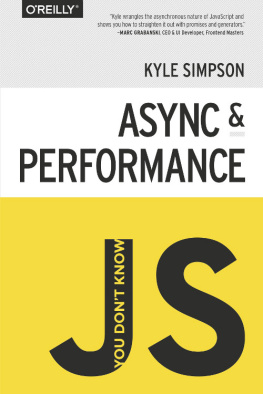

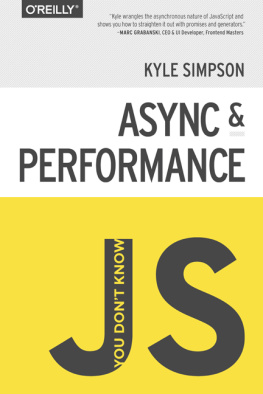
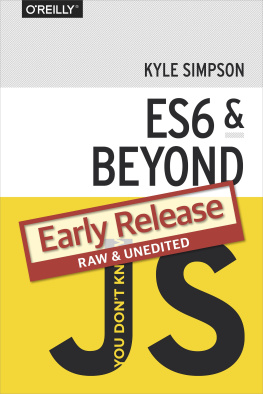
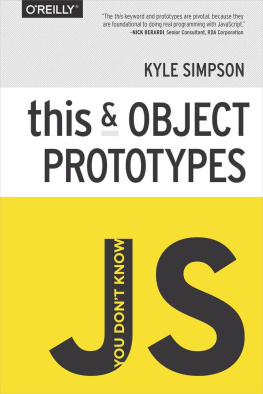
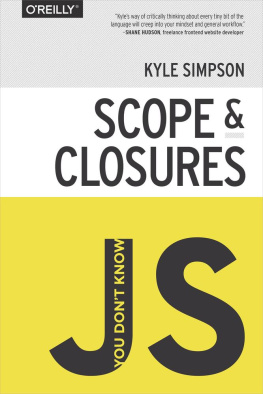


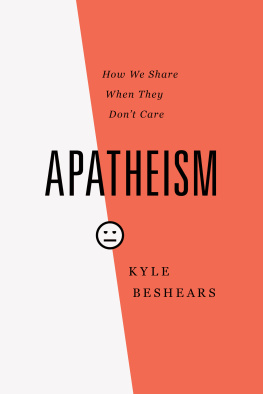


![Kyle Simpson [Kyle Simpson] - You Don’t Know JS: Up & Going](/uploads/posts/book/121420/thumbs/kyle-simpson-kyle-simpson-you-don-t-know-js.jpg)
